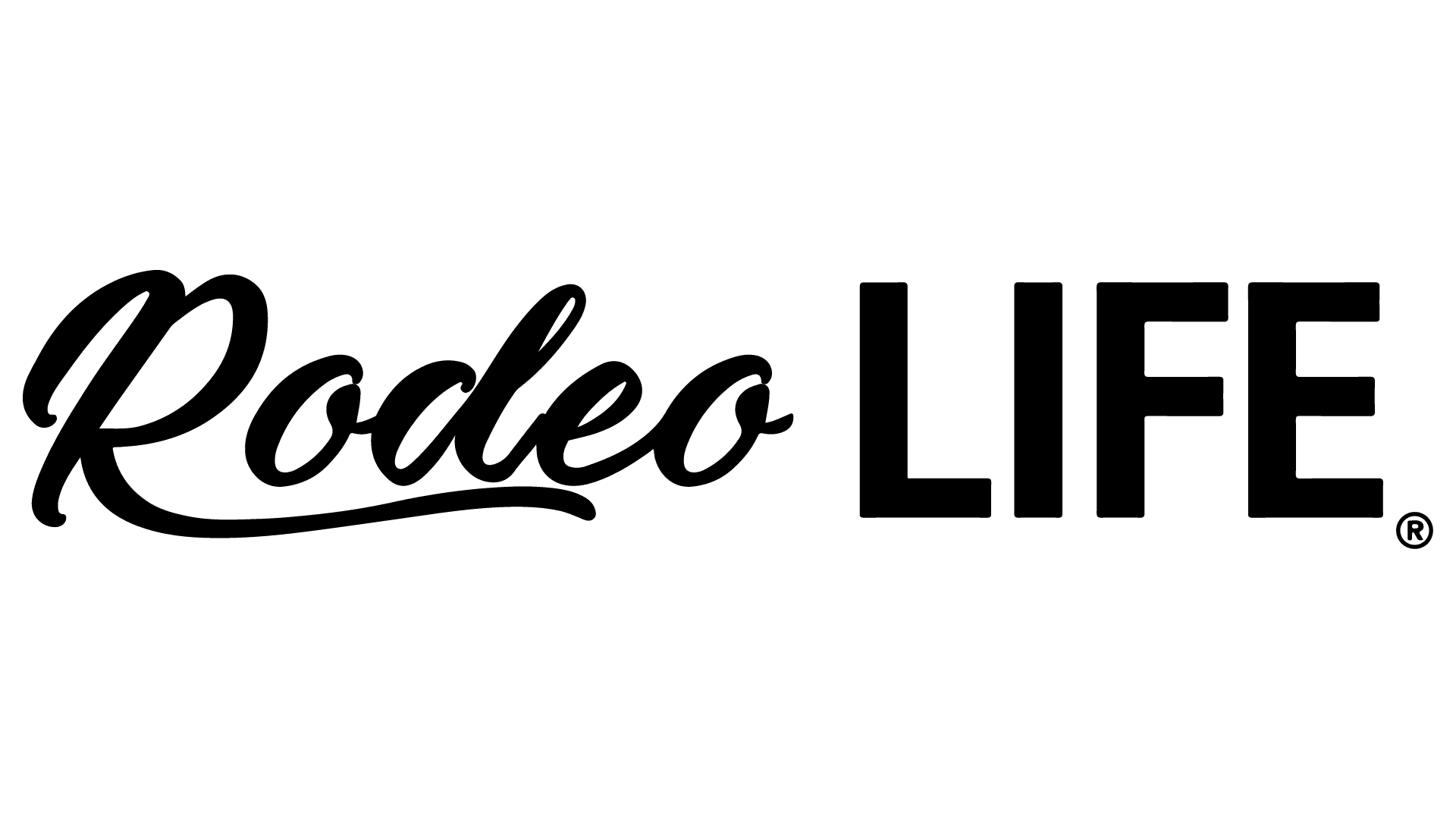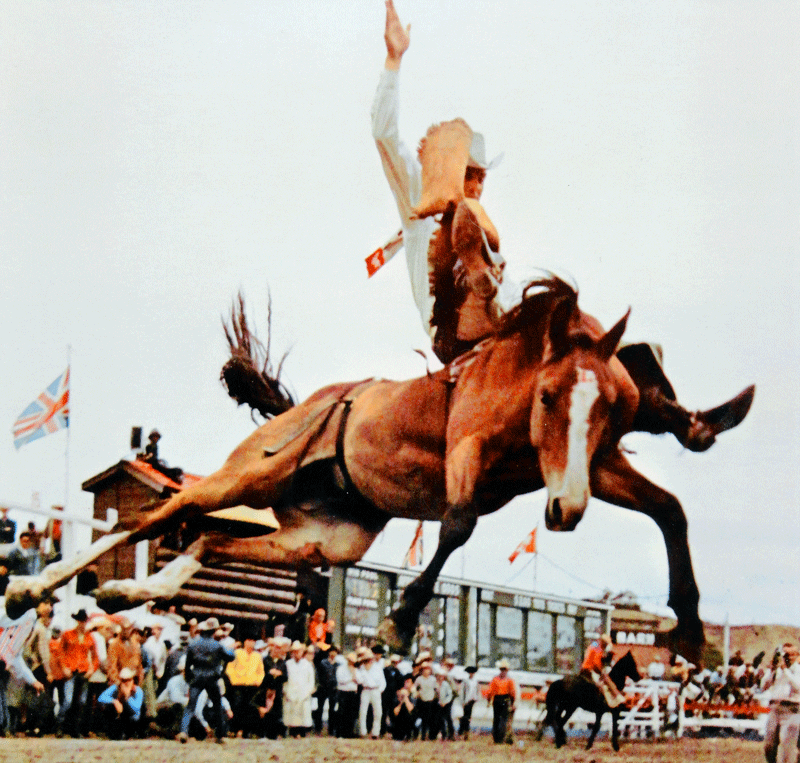[ “We had fun when we rodeoed, and it was good to us.” ]
or fifteen years straight, bull rider Dave Garstad never finished a Canadian rodeo season in less than fifth place in the Canadian standings.
The Stettler, Alberta cowboy dominated the rodeo scene for more than two decades, beginning in 1959 till he retired in 1980.
The eighth of nine children born in 1943 to Norwegian immigrants Magna (Juleson) and Olav Garstad, he and his brothers rode one of the family’s milk cows. “She bucked really well without a flank,” Dave said. “She’d turn back and spin right at the gate.” Weighing 1400 lbs., riding her gave the boys the rodeo bug.
Back then, near Veteran, Alberta, where he was raised, the local farmers and ranchers would have cow riding during the multi-day brandings. Men and boys could pay an entry fee of $3 or $4 and ride. At the age of fifteen, Dave won the contest and $400, which was a lot of money in those days.
And that success determined his fate in life: rodeo.
He was a three-event cowboy, riding barebacks and bulls and steer wrestling, but bull riding was his forte.
Because of his $400 winnings, he could buy a Canadian Pro Rodeo Association membership and compete professionally. But his mother wouldn’t sign for him, as a minor. So George Myren signed the release form and he became a full-fledged member.
He rodeoed professionally as he finished high school. He had “senior matriculation” – high enough grades to attend university – but he chose to rodeo. Dave still remembers what the school principal told him. “He said, for somebody that had the academic promise that I had, I was wasting my time in the rodeo business.”
But it wasn’t a waste.
He rodeoed across the country, and ventured to the States in the winter of 1963, hitting the big shows: Odessa, Denver, Ft. Worth, Amarillo, and on down the line.
His first time rodeoing in the U.S. was an interesting story. He’d gotten to the rodeo in Big Sandy, Montana, but didn’t have his RCA (predecessor to the PRCA) card. He phoned the RCA office, in Denver at the time, requesting a card on short notice. He got results: Bill Linderman, president of the association, called the rodeo secretary in Big Sandy, giving her Dave’s new card number.
When he was broke, he worked in the oil patch in northern Alberta and British Columbia to make some money. But there weren’t too many lean years. At first, he was winning $12,000-$15,000 a year, getting on 120 bulls and 60 horses. A person could live on those wages.
But as he got more experience, he was making $20,000 to $25,000 a year, when a regular income might be $10-$12,000.
In 1967, he was the Canadian champion bull rider, having won more money than any other bull rider in the country. That year, he won eleven rodeos and placed second at 37. “I won a lot of money, considering the times.” He was sixty cents short of qualifying for the National Finals Rodeo, due to missing two rodeos while he courted Linda, who would be his future wife. “That’s the girl I wanted,” he said, “and I ended up with her.”
From 1963-1978, he never finished lower than fifth place in the year-end standings in the Canada Pro Rodeo Association.
Bull riders covered more bulls then, he said. “We didn’t have the misfortune of being thrown off eighty percent of the cattle we got on. You might ride sixty or seventy in a row before being bucked off.”
Two of his brothers rodeoed with him: Gid and Dave’s twin, Mark. Sometimes they traveled together. Their dad, Olav, passed away when Dave and Mark were nine years old.
One year, Dave, rodeoing in the Midwest and the South, got on the bulls of 33 different stock contractors, and only got bucked off two of them.
He was a three-time Southern Circuit CPRA champion, and in 1980, qualified for his first Canadian Finals Rodeo. (The Canadian Finals Rodeo didn’t come into existence until 1974).
At the Finals that year, during a ride, the bull’s head came up as Dave’s head came down. The bull’s horn broke his left cheek bone and the horn tip crushed his eye, causing him to lose sight in that eye. After that, he retired. He and Linda had two young sons. “We had little kids, (ages three and five) at home, so I had to make some money. You can’t be bumping your head when you’re not physically fit,” he said.
After rodeo, he was a rig hand in the oil field, then in the 1980s, he went into the service business, monitoring drilling mud for ten years. Intelligent and a quick study, he understood every facet of the drilling business, knew the lexicon and the earth’s formations. He soon became a drilling foreman.
Typical of bull riders, Dave had his share of injuries. He broke his back once, and as a kid, broke his jaw, requiring him to live on canned milk for a time as his jaw was wired shut.
His worst injury was at Baird, Texas. After the buzzer, when Dave went to reach for his wrap, the bull bucked into a post, dumping Dave on the ground. The bull stepped on his back, breaking a shoulder blade and ten ribs on the same side. The ambulance driver, who had been drinking, forgot that Baird had a new hospital and drove his patient twenty miles farther than necessary to Abilene, Texas.
When Dave was released from the hospital, his brother, Gid, drove him to a motel. While there, he sneezed, causing a rib to puncture his lung, so he was back to the hospital. The “big-time” doctor at the hospital refused to see sports-related injuries because he felt they were self-inflicted. But the head surgeon was willing to treat him.
He was in ICU for a week, and when he flew home, the stewardess checked on him every five minutes, making sure he was OK.
Linda remembers a funny story from this hospital incident. She called him every morning, before work, to see how he was. One morning on the phone he gasped for air and couldn’t talk. She was upset, thinking he was getting worse. They talked that evening, and he explained: he had been laughing at Archie Bunker on TV. “He laughed so hard he couldn’t breathe,” she said.
Linda worked as a lab and X-ray technician; the couple had two sons, Ned, and Nate. The family traveled together when they could. The boys “always thought the bull riding should be first,” Linda said, “so they could go to the playground.”
The best part of rodeo, both Dave and Linda agree, is the people. Dave often traveled with Myrtus Dightman, Mel Hyland, and Tom Silverthorn, among others. “I could count on them,” he said.
“Rodeo is its own big family,” Linda said. And travel teaches lessons as well. “You learn so many life skills and coping skills out on the road.”
The couple lived in Big Valley, Alberta for 48 years, before moving to Stettler last year.
In addition to their sons and their spouses, they have three grandsons and a great-granddaughter.
Dave said desire is an important part of rodeo. “With any sport, if the desire isn’t there, you can’t do much at all, and in rodeo, that’s really evident.” He was inducted into the Canadian Pro Rodeo Hall of Fame in 2014.
He thinks about that first check he won, $400 for riding a cow at the ranchers’ branding. His rodeo career started, more or less, by accident. “If I’d have gotten stomped on that day, instead of winning, it would have been much different.
“We had fun when we rodeoed, and it was good to us.”









